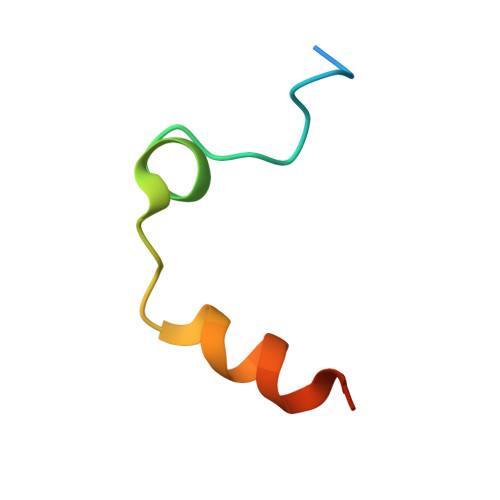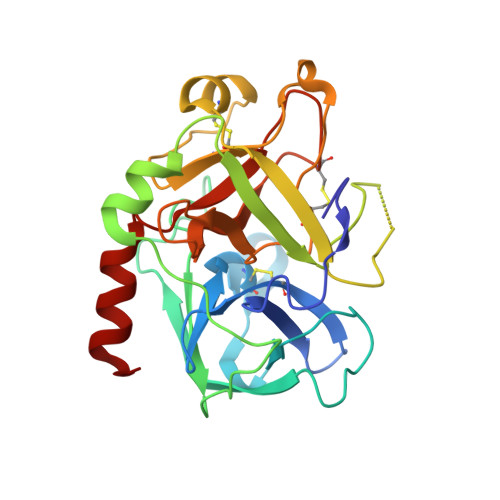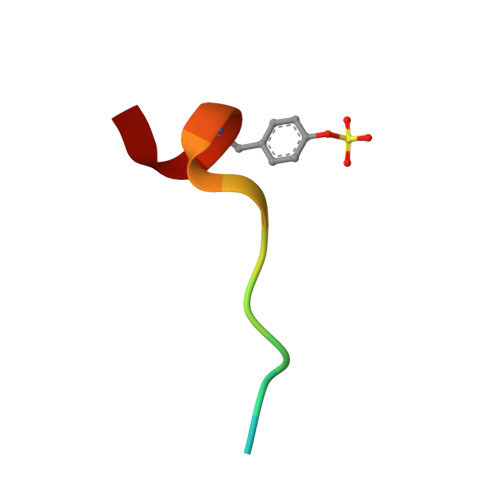Improved Stability of Proline-Derived Direct Thrombin Inhibitors through Hydroxyl to Heterocycle Replacement.
Chobanian, H.R., Pio, B., Guo, Y., Shen, H., Huffman, M.A., Madeira, M., Salituro, G., Terebetski, J.L., Ormes, J., Jochnowitz, N., Hoos, L., Zhou, Y., Lewis, D., Hawes, B., Mitnaul, L., O'Neill, K., Ellsworth, K., Wang, L., Biftu, T., Duffy, J.L.(2015) ACS Med Chem Lett 6: 553-557
- PubMed: 26005532
- DOI: https://doi.org/10.1021/acsmedchemlett.5b00047
- Primary Citation of Related Structures:
4YES - PubMed Abstract:
Modification of the previously disclosed (S)-N-(2-(aminomethyl)-5-chlorobenzyl)-1-((R)-2-hydroxy-3,3-dimethylbutanoyl)pyrrolidine-2-carboxamide 2 by optimization of the P3 group afforded novel, low molecular weight thrombin inhibitors. Heterocycle replacement of the hydroxyl functional group helped maintain thrombin in vitro potency while improving the chemical stability and pharmacokinetic profile. These modifications led to the identification of compound 10, which showed excellent selectivity over related serine proteases as well as in vivo efficacy in the rat arteriovenous shunt. Compound 10 exhibited significantly improved chemical stability and pharmacokinetic properties over 2 and may be utilized as a structurally differentiated preclinical tool comparator to dabigatran etexilate (Pro-1) to interrogate the on- and off-target effects of oral direct thrombin inhibitors.
Organizational Affiliation:
Departments of Medicinal Chemistry, Process Chemistry, Drug Metabolism and Pharmacokinetics, Preclinical Development, Pharmacology, and Thrombosis, Merck Research Laboratories , Kenilworth, New Jersey 07033, United States.





















